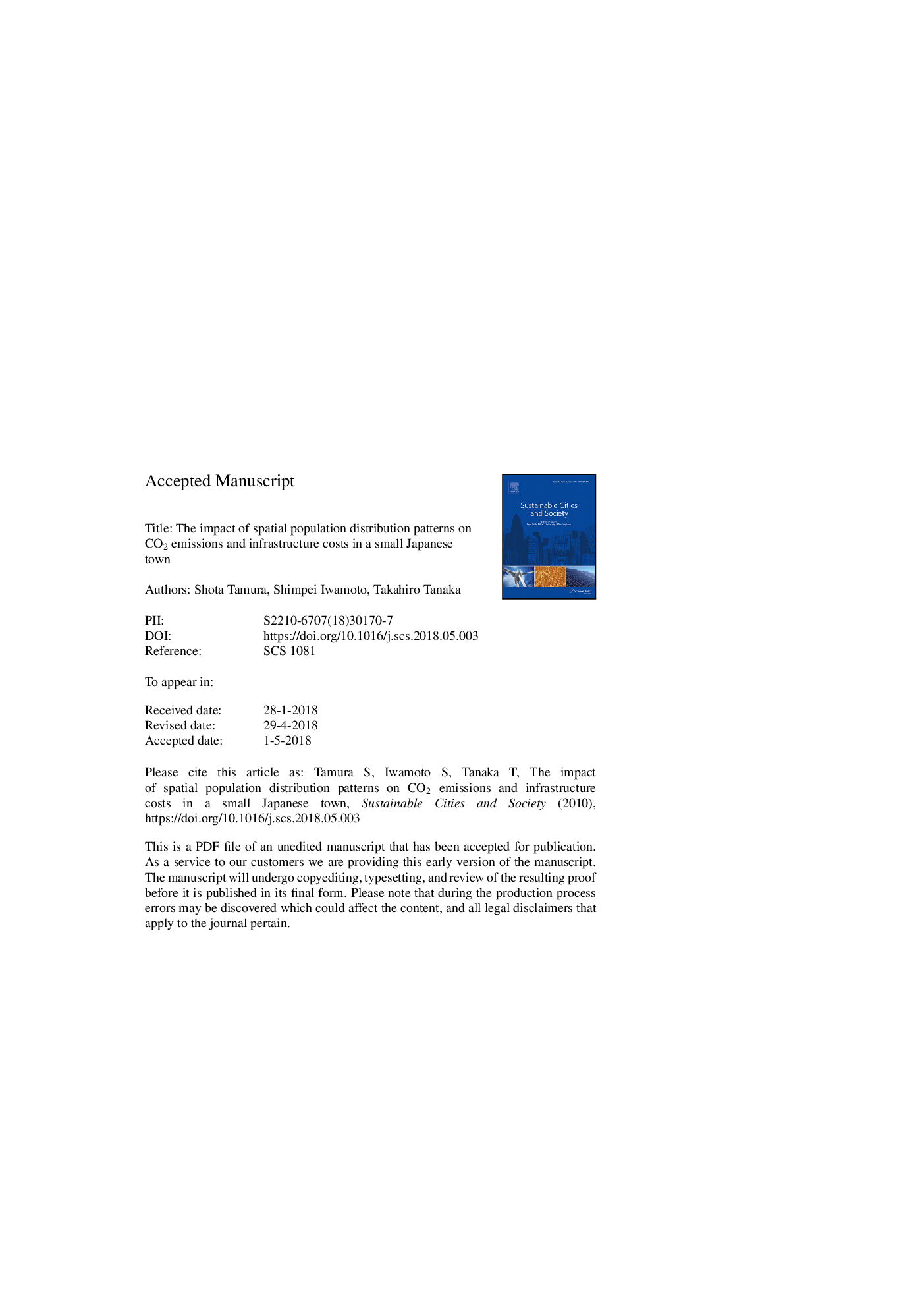| Article ID | Journal | Published Year | Pages | File Type |
|---|---|---|---|---|
| 6775270 | Sustainable Cities and Society | 2018 | 37 Pages |
Abstract
Recent years have seen a decrease in the population of Japan. If urban areas continue to expand to the suburbs with this depopulation, various urban problems will arise including increase in energy consumption and the cost of developing and maintaining infrastructure due to high dependence on car use in daily life and inefficient development and maintenance of urban infrastructure. To address this, a compact urban structure is proposed corresponding to the decreasing population especially in provincial small towns. However, it is not clear where denser urban areas are expected and how much of the population will remain located there. Consequently, this study aims to examine a preferable future population distribution pattern from the viewpoint of CO2 emissions and infrastructure costs in Fuchu City, Hiroshima Prefecture, a provincial small town. This study quantitatively assesses the reductive effect of such a population compaction on CO2 emissions and infrastructure costs. Results reveal that creating a compact urban structure will reduce CO2 emissions and infrastructure costs, and the effects differ widely based on scenarios. Furthermore, the study considers the effects of “population density in a compact district,” “population balance among inside and outside of compact district,” and “central place of compact district” on CO2 emissions and infrastructure costs.
Related Topics
Physical Sciences and Engineering
Energy
Renewable Energy, Sustainability and the Environment
Authors
Shota Tamura, Shimpei Iwamoto, Takahiro Tanaka,
